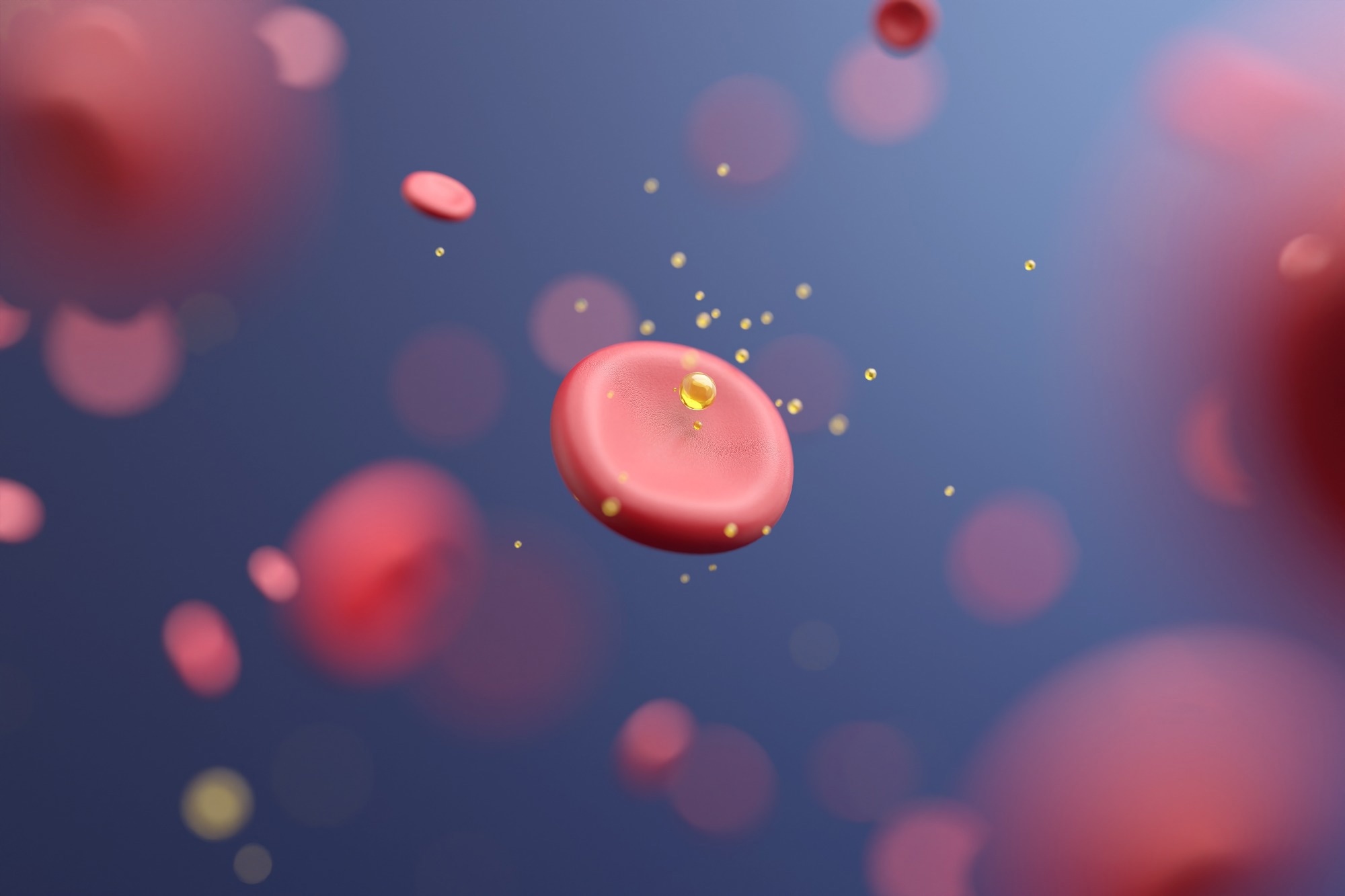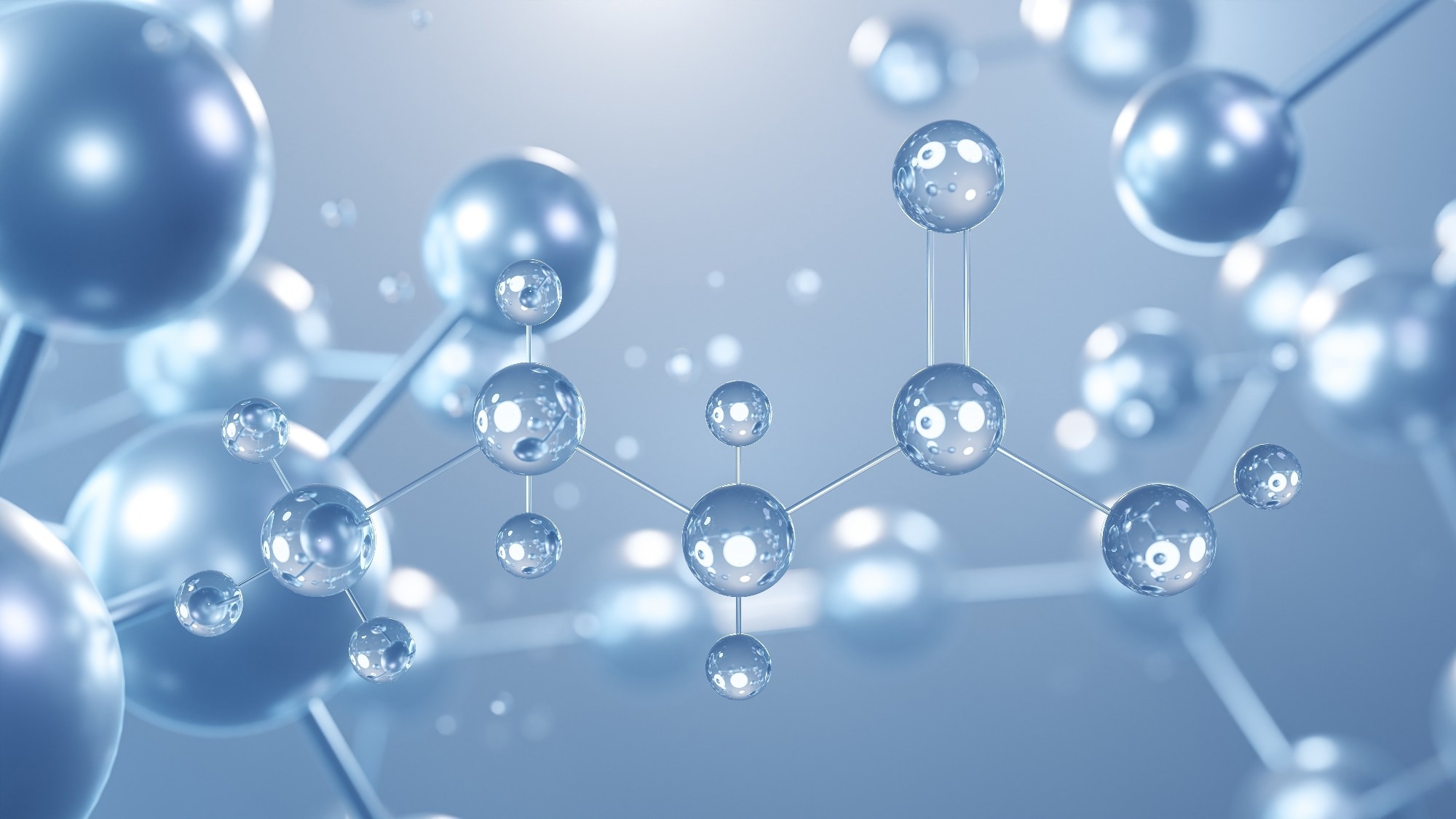Introduction
What is C13 fatty acid?
The source of C13
Biological and metabolic roles
Emerging research and clinical interest
Challenges in studying C13 fatty acids
Future directions
References
Further reading
While C13 fatty acid remains elusive in human plasma, new findings reveal its microbial origins, unique metabolic pathways, and potential as a biomarker for understanding how diet and the gut microbiome influence human health.
 Image Credit: Piyaset / Shutterstock.com
Image Credit: Piyaset / Shutterstock.com
Introduction
Tridecanoic acid (C13) is an odd-chain saturated fatty acid (OCSFA) that enters β-oxidation to supply propionyl-coenzyme A (CoA), rather than acetyl-CoA, thereby supporting gluconeogenesis and the tricarboxylic acid (TCA) cycle. Pentadecanoic acid (C15) and heptadecanoic acid (C17) have been extensively characterized, whereas few studies have investigated tridecanoic acid (C13), which only occurs at trace concentrations in human plasma.
This article examines C13 and its microbial origins, the distinctive CoA energy pathway, as well as its potential benefits for the gut microbiome and metabolism.
What is C13 fatty acid?
C13 is a saturated fatty acid derived from 13 carbon atoms, which makes it the shortest member of the OCS-FA family that also includes C15 and C17. Comprehensive plasma lipidomics indicate that C13 concentrations are not sufficient to reach routine detection limits, which highlights the extreme scarcity of this molecule.1
All OCS-FAs share a distinctive fate during β-oxidation, as removal of a three-carbon fragment yields CoA instead of the two-carbon acetyl-CoA released from even-chain homologs, thereby feeding gluconeogenesis and the methylmalonyl-succinyl arm of the TCA cycle. This anaplerotic route means odd-chain fragments can replenish metabolic intermediates and may influence health differently from common even-chain fatty acids such as C16 or C18.
Current evidence indicates that most OCS-FAs originate from rumen or gut microbial lipogenesis and enter systemic circulation through the diet. Although C13 remains sparsely studied, its rarity allows for its use as a sensitive tracer of diet-microbiome interactions and makes it a promising target for future lipidomics research.1
The source of C13
Endogenous generation of C13 is likely limited to CoA from branched-chain amino acid catabolism. Furthermore, microbial propionate may be elongated and subsequently degraded by peroxisomal α-oxidation, a one-carbon shortening reaction that yields odd-chain products in tiny amounts.2
Rumen bacteria incorporate propionate into de novo lipogenesis, which leads to the production of OCSFAs that enter milk fat. Comparatively, human intake of dairy lipids delivers picogram-to-nanogram quantities. Within the human colon, obligate anaerobes elongate substrates or decarboxylate acetyl units, thereby releasing OCSFAs that eventually reach portal circulation and enrich hepatic lipid pools.2
Fermented foods, such as aged cheeses, kefir, natto, and certain plant waxes, can also provide small doses of C13. Engineered microorganisms are also being explored to enhance yields for research and biotechnology applications. Environmental chemists have also utilized C13 as a molecular tracer of microbial turnover in soils and sediments.2
Biological and metabolic roles
C13 serves as a substrate for energy production. Within the mitochondria, C13 undergoes β-oxidation in successive two-carbon steps until a five-carbon fragment remains, with the final spiral releasing acetyl-CoA and propionyl-CoA.
Propionyl-CoA converts to succinyl-CoA, which ultimately enters the TCA cycle to support gluconeogenesis during fasting. This bypass distinguishes odd-chain fatty acids from even-chain homologues, which yield only acetyl-CoA and, consequently, cannot replenish the TCA intermediates.3
Emerging cell and animal studies also suggest that minor odd-chain species modulate inflammation. Propionyl-CoA derived from C13 can influence histone acylation and gene expression, whereas short tridecanoyl-derived oxylipins have been proposed as anti-inflammatory signals.3
It remains unclear which tissues elongate or degrade C13, how its derivatives signal, and whether diet or microbiota can elevate plasma levels enough to influence physiology. Resolving these questions will elucidate whether C13 can be considered a metabolic messenger.3
 Image Credit: SergeiShimanovich / Shutterstock.com
Image Credit: SergeiShimanovich / Shutterstock.com
Emerging research and clinical interest
Targeted lipidomics in the European Prospective Investigation into Cancer and Nutrition (EPIC) Potsdam cohort reported higher circulating levels of C15 and C17, associated with a reduced risk of type 2 diabetes. The less abundant C13 may offer similar protection because it arises from the same metabolic clusters; however, direct epidemiologic data remain limited.
In piglet nutrition studies, algal-oil formulations contained 3.23% C13 within the total fatty acid pool, demonstrating that routine profiling can quantify this trace lipid for biomarker development. This capability encourages the use of C13 as a metabolic or dietary indicator alongside longer OCFAs.
These findings suggest that C13 plays a role as a measurable marker of dairy and microbial lipid intake, a potential modulator of glucose homeostasis through gut-host cross-talk, and a promising target for engineered microbial factories that can supply purified C13 for future studies. In the future, controlled human trials are needed to confirm the independent effects of C13 and establish diagnostic reference ranges.4
Challenges in studying C13 fatty acids
C13 remains one of the least characterized lipids in human biochemistry. Overcoming this scarcity requires sample enrichment and the use of high-resolution platforms, such as gas chromatography-mass spectrometry (GC-MS), high-resolution mass spectrometry (HRMS), or two-dimensional nuclear magnetic resonance (NMR) configured with parts-per-million mass windows and isotope labeling.
These instruments can separate tridecanoic acid from abundant even-chain isobars. However, specialized hardware, expert operators, and careful calibration are required to prevent false positives caused by background ions or field inhomogeneities.5
Current datasets focus on major unsaturated or long-chain lipids, which leaves the absorption, tissue distribution, β-oxidation, and potential signalling actions of C13 largely untested. Until longitudinal studies correlate dietary intake with clinical outcomes, C13 will persist as a trace biomarker whose physiological relevance, toxicity thresholds, and therapeutic potential are still emerging.5
Future directions
Carefully designed human intervention trials are needed to clarify the absorption, distribution, and dose-response of C13 fatty acids. Integrating untargeted and targeted metabolomics with clinical phenotyping will allow investigators to map how circulating C13 modifies global metabolic networks rather than isolated lipid pools.
The role of C13 in the gut-liver axis must also be studied, as bacterial fermentation products may dictate hepatic uptake and beta oxidation of C13. Multimodal studies that combine isotope-labeled tracers, microbiome sequencing, and functional neuroimaging can also be used to reveal whether C13 acts as a signaling molecule, metabolic substrate, or both.
Establishing these mechanistic links will inform dietary guidelines, guide the development of microbiome-targeted therapies, and support personalized nutrition strategies that account for individual variation in odd-chain fatty acid metabolism.6
References
- Jenkins, B., West, J. A., & Koulman, A. (2015). A review of odd-chain fatty acid metabolism and the role of pentadecanoic acid (C15: 0) and heptadecanoic acid (C17: 0) in health and disease. Molecules, 20(2), 2425-2444. DOI: 10.3390/molecules20022425, https://www.mdpi.com/1420-3049/20/2/2425
- Rowland, I., Gibson, G., Heinken, A., Scott, K., Swann, J., Thiele, I., & Tuohy, K. (2018). Gut microbiota functions: metabolism of nutrients and other food components. European journal of nutrition, 57, 1-24. DOI:10.1007/s00394-017-1445-8, https://link.springer.com/article/10.1007/s00394-017-1445-8
- Talley, J. T., & Mohiuddin, S. S. (2023). Biochemistry, fatty acid oxidation. In StatPearls [Internet]. statpearls publishing. https://www.ncbi.nlm.nih.gov/books/NBK556002/
- Duan, G., Li, M., Zheng, C., Wan, M., Yu, J., Cao, B., ... & Cong, F. (2025). Odd-chain fatty acids-enriched fats improved the growth and intestinal morphology and function in milk replacers-fed piglets. The Journal of Nutrition. DOI:10.1016/j.tjnut.2025.01.021, https://www.sciencedirect.com/science/article/pii/S0022316625000288
- Cravero, B.H., Prez, G., Lombardo, V.A., Guastaferri, F.V., Delprato, C.B., Altabe, S., de Mendoza, D. and Binolfi, A. (2024). A high-resolution 13C NMR approach for profiling fatty acid unsaturation in lipid extracts and in live Caenorhabditis elegans. Journal of Lipid Research, 65(9), 100618. DOI:10.1016/j.jlr.2024.100618, https://www.sciencedirect.com/science/article/pii/S0022227524001238
- Hu, Y., Hu, X., Jiang, L., Luo, J., Huang, J., Sun, Y., Qiao, Y., Wu, H., Zhou, S., Li, H. and Li, J., 2025 Microbiome and metabolomics reveal the effect of gut microbiota on liver regeneration of fatty liver disease. EBioMedicine, 111. DOI:10.1016/j.ebiom.2024.105482, https://www.sciencedirect.com/science/article/pii/S2352396424005188
Further Reading
Last Updated: Jul 3, 2025